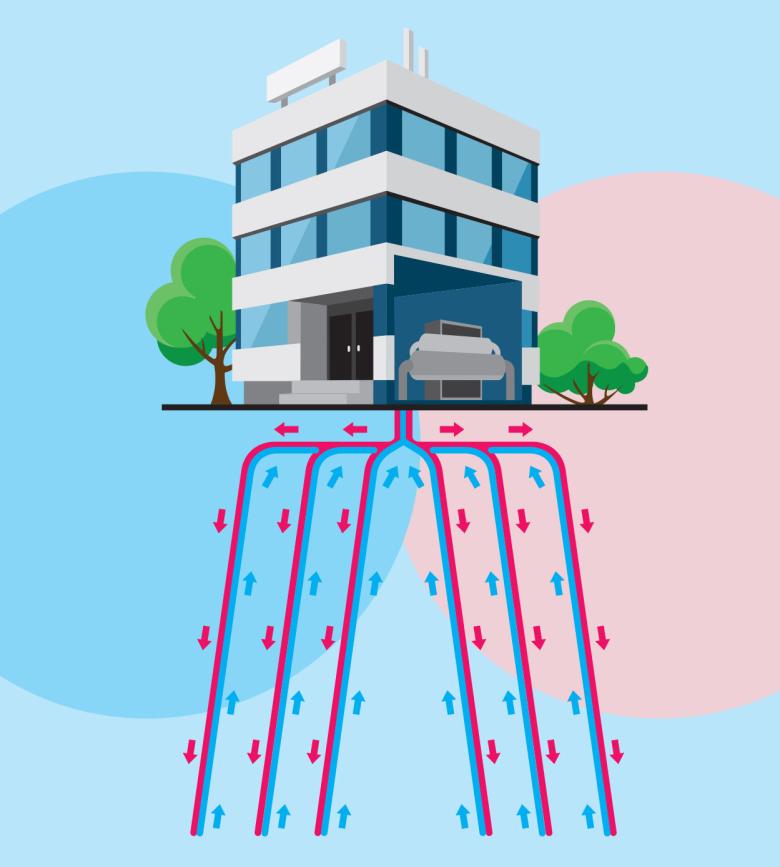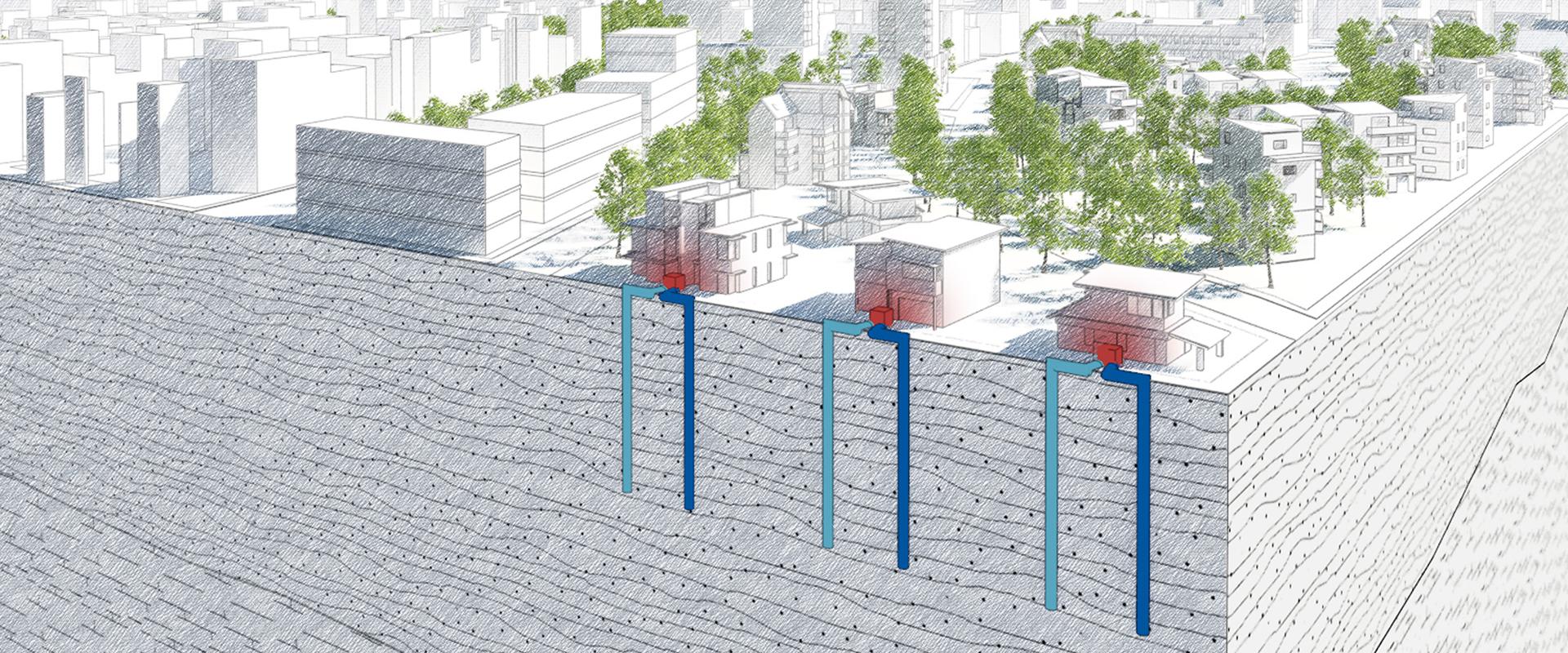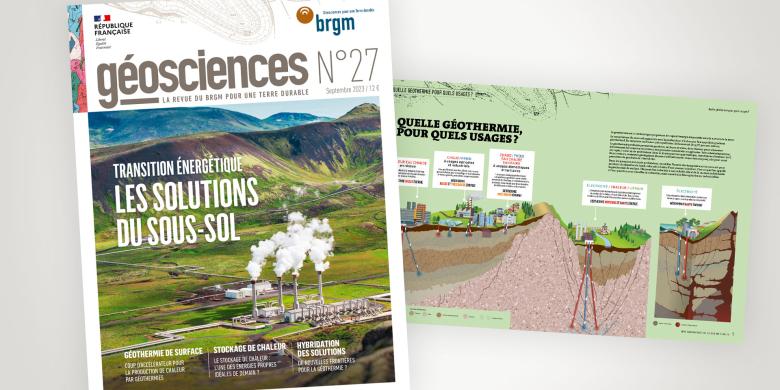Established in 2019, Celsius Energy is a subsidiary of SLB that was set up by Cindy Demichel, Sylvain Thierry and Mathieu Simon to develop an innovation: near-surface geothermal energy from boreholes in a star-shaped layout. Whether for new or renovated buildings, this system can be adapted to most buildings with a limited floor area.
Against an energy transition background, geothermal energy offers significant added value to the French energy mix. Here is an extract from an interview with Cindy Demichel, published in Geosciences magazine No. 27.
You have developed an innovative geothermal system in a star-shaped layout. Can you explain it to us?
Cindy Demichel: The Celsius Energy system, our innovation, is a closed star-shaped heat exchanger at a depth of 200 metres where the natural temperature of the rock is between 12 and 15°C, equipped with double-U probes through which a heat transfer fluid circulates. The system is connected to a heat pump. What is special about the star-layout system is that all the wells under the building converge at a single point in a 14 m² container. This star-shaped heat exchanger is a technical solution to land constraints, as it only needs a smaller surface area. In urban areas, there is rarely enough space to install a conventional system.
Our solution is designed for all buildings equipped with a gas network, from apartment blocks and campuses to mixed development zones.

The Celsius Energy system, a closed star-shaped heat exchanger suitable for dense urban areas.
© Celsius Energy
What are the obstacles to the development of near-surface geothermal energy?
Cindy Demichel: Lack of knowledge among users in the value chain: citizens, business leaders, local authorities, etc. Depending on the geographical layout of the buildings, it can be complicated to install the system, which is why we are the sole point of contact for our innovative solution. We take care of all the technical aspects of feasibility. Finally, the installation cost can also impede progress. At current energy costs, the return on investment is becoming more favourable: from 6 to 16 years. But what is increasingly taken into account is the return on carbon. For this type of facility, it takes 10 months compared to a gas boiler, taking into account the drilling work, the materials used, etc. Don't forget that this is a long-term facility. Obviously the heat pump will have an operational life of 20-25 years, but the heat exchanger will last as long as the building, as it is underground and therefore not subject to the vagaries of the weather, thus protecting it from damage.
You say that the geothermal energy potential in France accounts for 95% of the country. Who does your solution target?
Cindy Demichel: All buildings equipped with a gas network, which means the vast majority of buildings: apartment buildings, campuses, even urban development zones, with a floor area of at least 2000 m2, to ensure that the operation remains profitable. As BRGM has perfectly mapped, some areas will be more complicated than others, but only 5% of the country will not be eligible. A study was carried out by BRGM, with the support of ADEME, on the initiative of the Greater Paris metropolitan area. It shows that in the Greater Paris region, 58% of the heating and cooling could come from these first 200 metres, taking into account the severe constraints on land in the Greater Paris region. On a national scale, that's the lowest percentage for all metropolitan areas. The possibilities are immense!
Geosciences No. 27: Subsurface solutions for the Energy Transition
Geothermal energy, CO2 or heat storage, access to mineral resources and more. This issue of Géosciences looks at the potential of the subsurface for the energy transition.
Associating the subsurface with the energy transition may appear incongruous. Wind turbines, photovoltaic panels, or possibly hydroelectric dams and nuclear power stations come more readily to mind. And yet, the energy and ecological transition that will gradually lead us to develop low-carbon energy will require us to make increasing use of the resources and potential of the subsurface.
Issue 27 of BRGM's Géosciences magazine investigates subsurface solutions: geothermal energy, CO2 storage, heat storage and hybridisation of these different solutions with other sources of renewable energy. It also looks at access to mineral resources, which are vital to the success of the energy transition.







